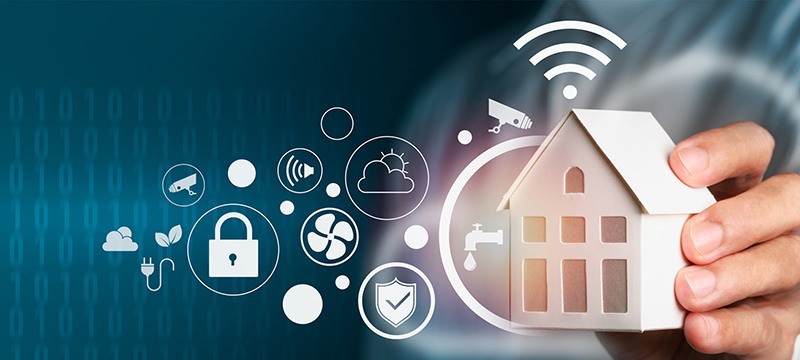As smart home technology becomes increasingly integrated into everyday life, consumer feedback has become the cornerstone of understanding how these innovations affect comfort, convenience, safety, and data privacy. From voice assistants to smart thermostats, robotic vacuums to connected doorbells, millions of households now rely on smart home devices to enhance daily living. But what do users really think? Are these devices making life easier—or introducing new complications?
In this article, we explore consumer sentiment surrounding smart home technology. Based on surveys, product reviews, case studies, and user forums, we delve into the most common praises, complaints, and expectations from the people who use these devices daily.
1. A Snapshot of the Smart Home Market
Before diving into consumer opinions, it’s important to understand the scale of the market. According to recent data:
- Over 70% of U.S. households own at least one smart home device.
- The global smart home market was valued at over $150 billion in 2024 and is expected to grow significantly by 2030.
- Common product categories include smart speakers (like Amazon Echo or Google Nest), security systems, smart lighting, connected thermostats, and home appliances.
This surge in adoption signals a fundamental shift in how people interact with their living spaces—but it also leads to varied user experiences.
2. What Consumers Love About Smart Home Devices
a. Convenience and Automation
One of the most commonly praised features of smart home devices is their ability to automate mundane tasks. Consumers love being able to:
- Set lights to turn on and off based on schedules or occupancy.
- Control thermostats remotely to save energy or adjust temperature before arriving home.
- Use voice commands to play music, answer questions, or control other smart devices.
Consumer Quote:
“I love being able to ask Alexa to dim the lights or start the coffee maker. It makes mornings smoother and gives me back time I didn’t even realize I was wasting.” — Reddit user, r/smarthome
b. Enhanced Security
Smart doorbells with video recording, motion sensors, and smartphone alerts are among the most appreciated products. Users frequently cite the peace of mind provided by:
- Remote access to security feeds.
- Two-way communication with delivery people or visitors.
- Instant alerts for unusual activity.
Consumer Quote:
“The Ring doorbell helped us catch a package thief last year. I can’t imagine not having it now—it’s like having a security guard on our doorstep.” — Product review on Amazon
c. Energy Efficiency
Smart thermostats (like Nest and Ecobee) are often praised for helping users reduce energy bills. These devices learn user behavior and adjust heating or cooling accordingly, which consumers find both intelligent and cost-effective.
Consumer Quote:
“My Nest paid for itself within six months. The monthly utility savings and app tracking make me feel like I’m in control of my energy use.” — Google Play Store review
3. The Most Common Complaints
Despite widespread enthusiasm, smart home technology is not without its flaws. Consumers are increasingly vocal about several recurring pain points.
a. Connectivity and Reliability Issues
Smart devices often rely on Wi-Fi or Bluetooth connections, which can be inconsistent. Users report frustration with:
- Devices randomly going offline.
- Incompatibility between different brands or ecosystems.
- Delayed or failed commands due to network lag.
Consumer Quote:
“My smart plugs disconnect every time the router resets. I have to manually re-add them, which defeats the point of automation.” — Amazon review
b. Privacy and Data Security Concerns
As smart devices collect vast amounts of user data, privacy has emerged as a significant concern. Consumers are wary of:
- Voice assistants recording conversations.
- Companies storing sensitive data without adequate transparency.
- Vulnerabilities to hacking or unauthorized access.
Consumer Quote:
“I unplugged my smart speaker after hearing it respond to something I didn’t say. It made me uncomfortable thinking it’s always listening.” — User comment, CNET forum
c. Setup Complexity and Learning Curve
Many users, especially older adults or less tech-savvy individuals, find initial setup and integration challenging. Even connecting multiple devices from the same brand can involve frustrating processes.
Consumer Quote:
“Setting up my smart thermostat took three calls to customer service. The app kept crashing, and the manual didn’t help at all.” — App Store review
4. Ecosystem Loyalty vs. Fragmentation
Smart home ecosystems—such as Apple HomeKit, Google Home, Amazon Alexa, and Samsung SmartThings—are praised for streamlining control but criticized for limiting choice.
Positives:
Consumers who commit to one ecosystem report smoother experiences and deeper integration across devices.
Consumer Quote:
“Everything in my house works with Alexa. It’s seamless—lights, thermostat, locks, even the vacuum.” — Alexa app review
Negatives:
Others complain about fragmentation, especially when trying to mix brands or systems.
Consumer Quote:
“Why can’t my Google Nest cam work properly with my Apple HomeKit? It’s frustrating to juggle different apps just to turn on a light or view footage.” — Smart home enthusiast, Reddit
5. Smart Home Devices and Daily Life
Consumer reviews increasingly show how smart devices impact daily routines, from minor conveniences to major lifestyle changes.
Morning Routines:
Many users report using smart assistants to start their day with weather updates, calendar reminders, and hands-free coffee brewing.
Family Life:
Parents enjoy features like baby monitors, time-restricted screen access, and parental controls for TV or internet-connected devices.
Elder Care:
Smart tech is proving valuable for monitoring elderly family members, allowing adult children to check in remotely via sensors or video feeds.
Consumer Quote:
“We installed a smart camera in my mom’s home so I can check in and make sure she’s OK. It’s been a game changer for peace of mind.” — AARP user testimonial
6. Emerging Trends in Consumer Expectations
As the technology evolves, so do consumer demands. Current trends suggest that users want:
a. Better Interoperability
Consumers increasingly seek devices that work across platforms, pushing manufacturers to support standards like Matter, an emerging protocol that promises universal compatibility.
b. More Local Processing
Instead of routing everything through the cloud, users are demanding on-device AI to protect privacy and reduce latency.
c. Sustainability
Environmental concerns are driving interest in energy-efficient devices, sustainable manufacturing, and longer product lifespans.
7. Real-World Use Cases
Let’s look at some illustrative examples of how real people integrate smart tech into their homes:
Case Study 1: The Busy Professional
Amy, a freelance designer, uses her smart home to balance work and life:
- Smart lighting adjusts to time of day to boost productivity.
- Voice commands control music and reminders.
- Smart lock allows dog walkers to enter with temporary access codes.
Case Study 2: The DIY Enthusiast
Carlos, a tech-savvy homeowner, built a fully automated system:
- Motion sensors trigger hallway lighting at night.
- Smart sensors monitor humidity in his basement and notify him of leaks.
- Solar panels sync with smart energy management software.
8. Final Thoughts: The Consumer Verdict
So, what do consumers say about their smart home devices? In summary:
Positive Themes:
- Strong praise for convenience, especially voice control and automation.
- High satisfaction with energy savings and enhanced security.
- Appreciation for products that “just work.”
Negative Themes:
- Frustration with device compatibility and ecosystem lock-in.
- Concerns over privacy and data handling.
- Mixed experiences with setup and reliability.
Bottom Line:
Most consumers agree that when smart home devices function well, they offer significant value and comfort. However, ease of use, privacy, and consistent performance remain key expectations—and manufacturers who address these concerns will earn stronger brand loyalty in the years ahead.
Looking Ahead:
As voice assistants grow smarter, AI becomes more integrated, and standards like Matter mature, the smart home experience is likely to become more intuitive, secure, and inclusive. But as always, the ultimate verdict lies in the hands—and homes—of consumers.



